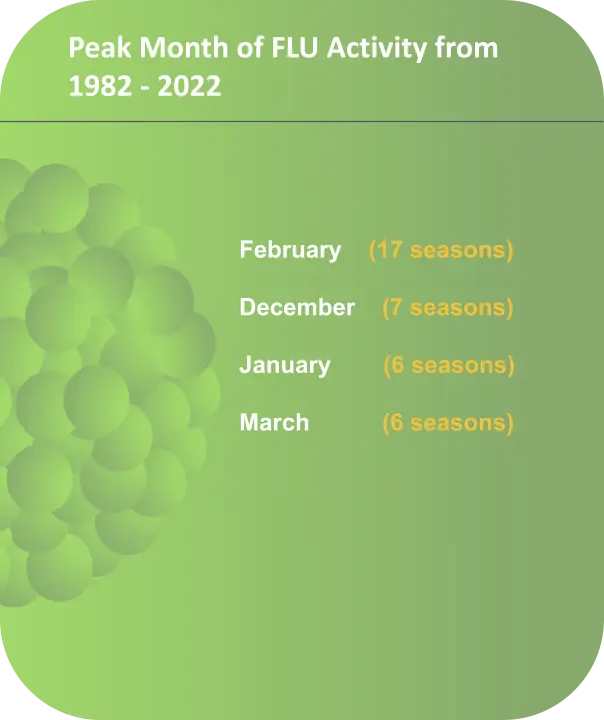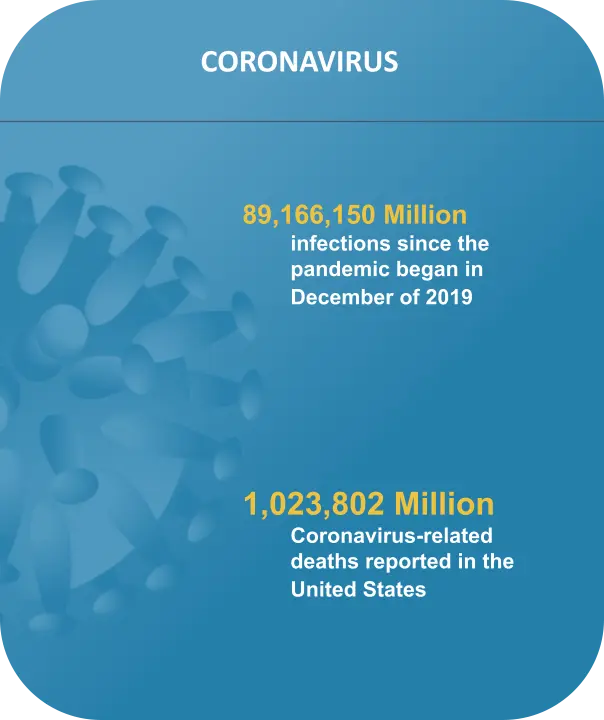That tickle in your throat, those achy muscles, and that feeling when you just don’t want to get out of bed. We are all familiar with those dreaded symptoms, which could mean that you’re getting sick. Many will think: Do I have COVID-19? Or could it be the flu1?
Typically, the “flu season” in the United States occurs during the fall and winter, peaking between December and February. When you feel sick during these months, it can be difficult to decipher between illnesses.
When people experience flu-like symptoms, the important question that we all face now is how to determine whether we have COVID-19 or the flu.
The Similarity of COVID-19 and Flu Symptoms
Unfortunately, many of the symptoms for both the flu and COVID-19 are very similar. The CDC lists the following overlapping symptoms1:
- Fever/chills
- Cough
- Breathing difficulties
- Fatigue
- Sore throat
- Runny or stuffy nose
- Body aches
- Headache
- Vomiting
- Diarrhea
- Loss of taste or smell*
*While the loss of taste or smell might be more prevalent in COVID-19 patients, people with the flu may also suffer from these symptoms.
As a result, analyzing the symptoms alone will likely not help to determine whether you have the flu, COVID-19 or something else.
It’s all about the timing
With both influenza and COVID-19, it may take some time before you start to feel sick after infection. However, the timing of the onset of symptoms tends to differ between the flu and COVID-19. With the flu, you will usually start to feel sick around one to four days after infection. While with COVID-19, it could take as little as a few days or up to two weeks1.
The window of time when someone is contagious also varies between the flu and COVID-19. The moment you start to feel sick with the flu, you tend to have the highest probability of spreading the virus. However, when it comes to COVID-19, you could be asymptomatic or have mild symptoms and still be contagious.
Close contact with an infected person is how you can contract both the flu and COVID-19. Essentially, small particles carrying the viruses are transmitted via sneezing, coughing, or talking in conversation. Once the infected particles enter the respiratory tract, infection can occur. The likelihood of infection tends to increase if you’re indoors versus outdoors. Ventilation, or lack thereof, can also be a factor. COVID-19 tends to be more contagious than the flu1.


Table 1 sourced from: Centers for Disease Control and Prevention. (2022, September 20). Flu season. Influenza (Flu). Retrieved from https://www.cdc.gov/flu/about/season/flu-season.htm
The lasting effects
The severity of both illnesses depends on the person. Lingering effects and complications can occur, which could result in the need for hospital treatment. The CDC lists the following complications that may be caused by influenza and COVID-191:
- Pneumonia
- Respiratory failure
- Fluid in the lungs
- Sepsis
- Cardiac damage
- Multiple-organ failure
- Heart or brain Inflammation
Knowing yourself is key
Both flu and COVID-19 warrant us all to be extra vigilant right now—which means being proactive.
If you do find yourself feeling symptoms associated with COVID-19 or believe that you may have been exposed to someone that knows they have COVID-19, don’t wait to get tested—it’s one of the most important things you can do to determine whether you may have been exposed to the virus. The iHealth® COVID-19 Antigen Rapid Test is an FDA-authorized test for COVID-19, and you can administer it in the comfort of your own home. It just takes a simple nasal swab provided with the testing kit to know if you are positive for the COVID-19 virus, with results provided in just 15 minutes. If you receive a negative result, you should test again in 24-48 hours. If you test negative and continue to experience symptoms of fever, cough and/or shortness of breath you should seek follow up care with your healthcare provider immediately. Your healthcare provider may suggest you need another test to determine if you have contracted the virus causing COVID-19.
For more information about our GoToKnow™ testing solutions, click here.
- Centers for Disease Control and Prevention. (2022, September 28). Similarities and differences between flu and covid-19 . Influenza (Flu). Retrieved from https://www.cdc.gov/flu/symptoms/flu-vs-covid19.htm